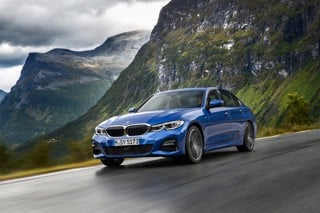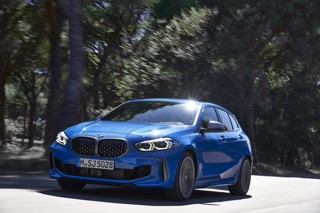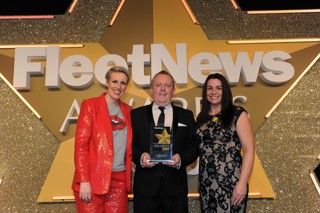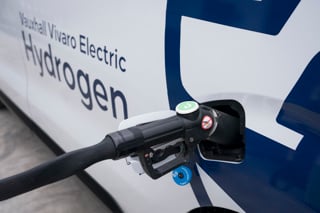Rob East spent a considerable chunk of time during his first year at BMW reviewing the carmaker’s approach to the fleet sector.
His conclusions? BMW needed to simplify its approach to the market.
Subsequent actions brought together the BMW and Mini fleet teams to facilitate a group policy for corporate sales, while a rationalisation of market channels enabled retailers to have a clearer view of the customer, aided by consistent offers for SME businesses.
East, general manager for corporate sales, opted to cut the number of channels from nine to just two.
“If a customer has up to five cars, it goes to the retailer through our SME channel; if they have more than five cars, it goes through our direct sales model,” he says.
Like its premium rivals, BMW endured a bumpy ride in 2019, with reductions in leasing and fleet other registrations and a rise in the more costly rental and captives sales.
It’s not a trend East intends to pursue, with his focus on profitable core fleet, dubbed ‘First Price Level’ (it also includes retail and Motability).
This category was up 1% in the first two months of 2020, with Second Price Level (rental and captives) down 3% before the coronavirus-enforced lockdown crippled the market.
Fleet News: Are you pleased to see the back of 2019?
Rob East: 2019 was tough with all the political and economic uncertainty. In fleet, we all felt the same pain with WLTP, policy changes, and we also had model changes with 3 Series and 1 Series. But we are satisfied with our performance; it was in line with our expectations. In Q4 we started to see the impact of those models and the strength of the 330e (plug-in hybrid).
This year, we have had a strong start. BMW is up 2% in total and corporate is up 4%. We are having fruitful conversations with our customers. Policy restrictions have been removed and we get a sense of optimism. But we’ve been prudent and realistic with our planning – it’s about sustainable growth.
FN: What is driving this renewed optimism?
RE: We had the Brexit uncertainty with a lot of our end users, who are global organisations. They now have partial certainty and are more confident to look at renewing their policies and new bandings. Fleet managers had a tough job, but they can now talk with certainty to their drivers on tax positions.
FN: Which models are they most excited about?
RE: The 330e is a strong proposition and we have a strong order bank. We will also have a Touring derivative and a facelifted 5 Series and plug-in X1 and X3 this year. While there is a segment shift to SUVs, we see a strong opportunity with the 5 Series, especially with the hybrid variants.
We have a strong plug-in offering throughout our range and the models have the athleticism and dynamism that is key for the brand. We also have the Mini electric. Our true fleet order bank is double last year.
Looking further ahead, we have the battery electric vehicle ix3 next year and the i4 concept.
FN: Will the Government-announced ban on PHEVs and hybrid from 2035 affect uptake of this technology as a stepping-stone to full electric?
RE: PHEV is still a fundamental part of our powertrain; it’s not a transition technology. For people doing high mileage, it’s a perfect solution with impressive real-world economy.
FN: How do ensure people use your PHEVs in the most efficient way?
RE: They need to put their destination in the sat-nav and let the car think for itself to maximise the efficiency. The car will assess the journey and get there in as efficient a way as possible using the plug-in technology and regeneration opportunities. We are investigating a secondary handover where customers are given the opportunity to go back to the retailer for a more detailed handover, especially if the car is delivered to their home. This will enable customers to interact with us on their terms to understand how much energy they can recuperate.
FN: BMW was ahead of the game in sharing its WLTP data with leasing companies; how much will the new testing regime impact on fleet choices?
RE: We were well prepared for WLTP and we worked in partnership with our leasing companies. It is inevitable that post-WLTP we will see a different powertrain (mix) with a pull to plug-in hybrid and battery electric vehicles. We see it immediately with our historic stalwarts, the 320d and 520d, where there is a richer mix with PHEV. But it’s also about choice and, for some, diesel or petrol is the right option, so we have to give them that choice.
FN: BMW did some modelling last year to show that the company car was a viable option for those considering cash. Are you seeing a move back to the company car?
RE: We did do some modelling but there are so many variables regarding how fleets pay and the complexities of policy. But it gave us comfort that opting out is not the panacea for many people. We are seeing, with the certainty of BIK post-April 6, a strong desire for some organisations to get drivers back into the car scheme and out of cash. Our approach is consultative; we advise, but it’s not our role to dictate.
FN: Has the exit of the DriveNow car share scheme from London forced you to reassess the opportunities for new mobility services?
RE: London had its challenges with all the boroughs, but it is still working elsewhere. We recognise that the way individuals procure mobility services is changing and will change. It’s about the right propositions in the market. It doesn’t reduce or dilute the global priority of BMW to have a broad range of mobility services for individuals. In business, it (uptake and usage) is difficult to predict. We have to take the market step-by-step. The priority now is to update policies, then remove grey fleet then the next phase will be the next stage in car fleet policies.
FN: How big are the opportunities offered by connected services?
RE: We see a clear trend that customers want to engage with the car in the way they do with their smartphone. We have over-the-air updates – such as Driver Recorder 360-degree camera – which can be purchased as an upgrade. We have a dedicated corporate development manager in aftersales who is talking to the leasing companies about how we feed information to them so they can use it as an early warning system (for potential faults).
FN: What are your priorities for (a post coronavirus) 2020?
RE: It’s about ensuring we have the basics right, the right people and the right propositions for the retailers. We have to manage our channel mix and enrichen the First Price customer level. I’m constantly challenging my team about where our next level of differentiation is. We are in a rapidly changing market: channels and customer expectations are changing, so we have to look at what we do to give them a great experience. We know that end users want a direct relationship with BMW from a service and aftersales expectation. We are hearing that loud and clear.
East describes the 2030 ICE ban and 2035 hybrid/PHEV ban as “an interesting challenge”, one which is just two lifecycles away for BMW. However, over the next three years its product portfolio will include 25 electric vehicles, of which at least half will be full electric.
“We have a strong proposition, but we have to understand the Government’s thought process,” he says. “We’ve had uncertainty since 2016 and we need greater clarity with open dialogue and transparency. The Government has to understand the challenges we face as an industry in meeting the new rules and we have to understand their key priorities.”
Disclaimer: this interview was carried out before the coronavirus lockdown and social distancing.






















Login to comment
Comments
No comments have been made yet.